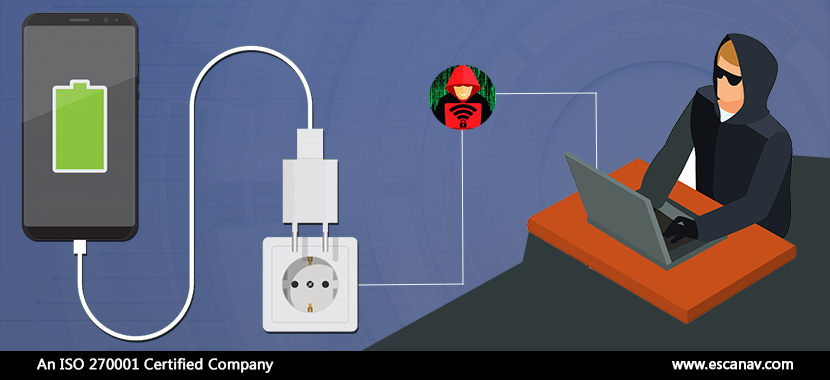To many heavy-duty smartphone users who are smitten with wanderlust find public charging spots to be a boon but only a few of them actually know that it can also be a bane. This is because of the lack of awareness amongst travelers and the majority of Smartphone users that secret phone chargers can secretly install malware on the user’s Smartphones. Although public charging ports appear as a savior in trying times for a lot of users, on the other hand, such charging ports are also capable of stealing all of the user’s data by installing malware on the phone. Public meeting places like coffee shops, offices, airports, hotel lounges, and railway stations are targeted with installations of such ports and this is where a new cyberattack vector comes into play called Juice Jacking.
Juice Jacking involves the use of a free public smartphone charging terminal for installing malware on a user’s device by using a USB charging port and copying all the data covertly.
Even though juice jacking is one of the most under-rated forms of attack but nonetheless it is perilous as any. With the help of a malicious code injected in the user’s smartphone, a cyber-criminal can use free charging spots to take complete control of a user’s smartphone. The technology required to carry out such an attack is easily available and many innocent users are fooled into installing harmful malware on their phone.
At times, in the race to outsmart the smartphone competition in the global market, the battery capacity of a new version of smartphones is compromised. At the dawn of cellular technology, phones from manufacturers like Nokia and Motorola used to last for at least a week, sadly the current crop of smartphones doesn’t even last a day. This leaves the users finding themselves in the race with others for the nearest charging points as soon as their battery is close to being drained off. In order to solve such problems, the authorities have taken the onus of installing USB charging ports. This might appear to be a blessing not only for the users but also for threat actors who are looking for an opportunity to infect a user’s device with malware. Such USB cords which are capable of spreading malicious infections are usually installed on places like airports, parks, conference centers, waiting rooms, etc.
The termed Juice Jacking was introduced in the technological ecosystem in the year 2011, to describe attacks that allow hackers to inject malware into smartphones using free charging spots which makes it easier to transfer both power and data.
Protecting your smartphone from Juice Jacking:
Presence of mind is the most important ingredient when it comes to protecting one’s smartphone and needs a few simple steps to be followed
- The safest and the most convenient solution is carrying a power bank or an extra battery
- Another solution is avoiding public charging spots altogether and looking for an electrical charging spot, since, electrical outlets don’t allow the transfer of data, and so it is a safer option.
- If there is a dire situation where there is no option but to charge your device at a public charging spot, then one should switch off their phone and then charge the device as this doesn’t allow the transfer of data.
- Also, always have a reliable paid mobile antivirus installed on your phone that will detect the malware if the above steps fail and it is still installed on a user’s device.
To read more, please check eScan Blog







